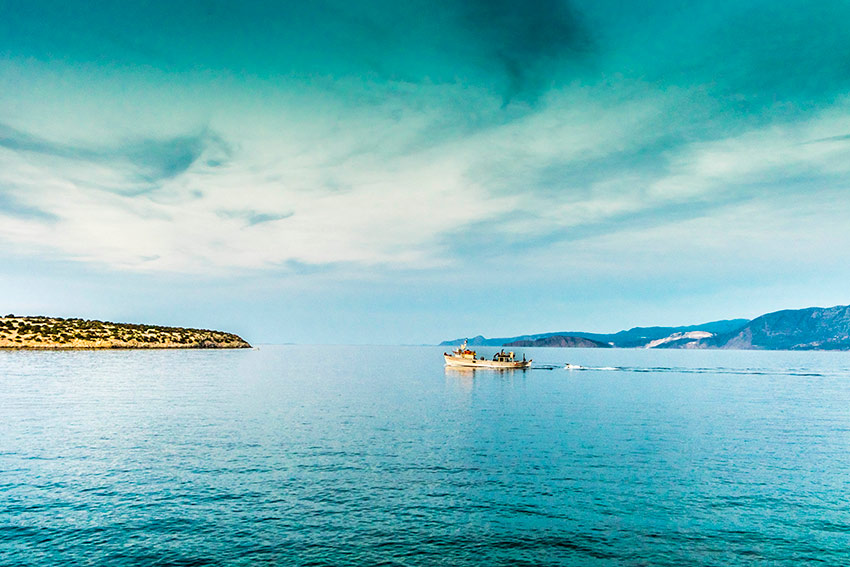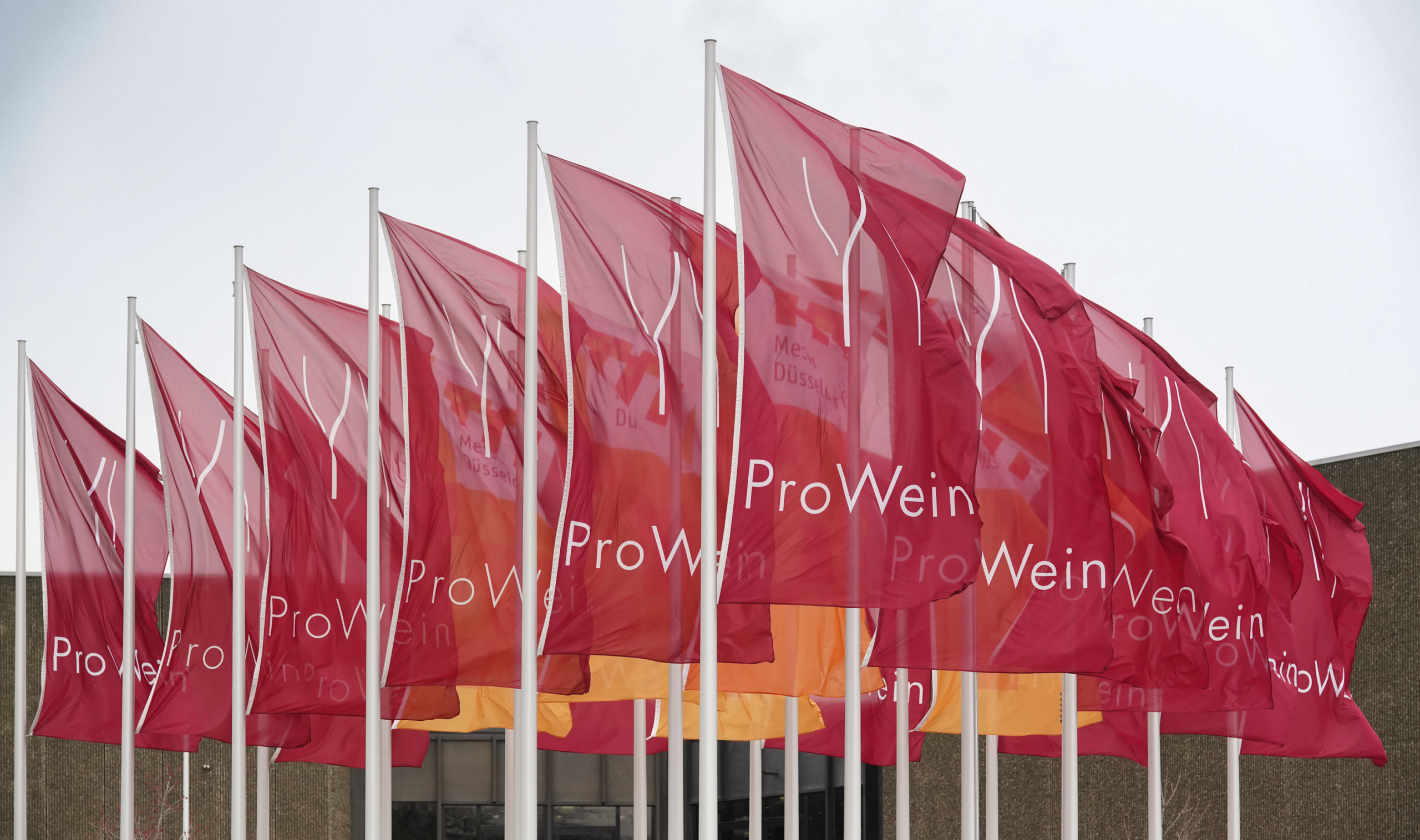The Minos touch | Food and travel magazine

Steeped in myth and cultures from the Minoans to Ottomans, Crete enjoys bountiful natural produce too. Its olives, cheeses, wines and seafood are all part of the legend, says Rosemary Barron
The table has long since disappeared under the dishes that Chrisostomos Orfanoudakis has been bringing from out from his restaurant kitchen in the city of Chania. Lamb from the
Sfakia region, grilled, then baked, and seasoned only with sea-salt and its own juices; three-year-old goat simmered in olive oil and red wine; and roasted pork with yellow-gold potatoes.
Vegetables are the wild kind, stamnagathi (wild chicory) with mushrooms, young pea shoots with olives, walnuts and a dressing of choumeli (the honey remaining in beeswax), olive oil and red wine vinegar. Some are mixed with meats, such as gigantes (large lima beans) with smoked pork, and aubergines with lamb – others are turned into lathera dishes (specialities soaked in copious quantities of olive oil). Quite the host, the hot oven is never empty. When the meat dishes are removed, in go bread and delicate dishes such as bourekakia (small pies). Feasts like this are just the way things are done in Crete, especially in the Orfanoudakis household.
From a young age, the importance of field to fork food was paramount in the life of Chrisostomos. As a child he accompanied his shepherd father when he moved his sheep and goats up to the summer mountain pastures high above Anopoli, in Sfakia, southern Crete. ‘I still love the food I ate then, it’s the food I want to give my family and guests,’ he explains. ‘When we milk the ewes, first we have staka (rich and curd-like), then fine milk for anthotyro (‘blossom’ cheese) and yoghurt, and the whey is turned into mizithra (fresh cheese) or fed to the animals.’
A use for everything is always found and those same fields ultimately help to fill the forks at his eponymous restaurant, close to the Venetian Arsenal in Chania, on the north-west coast. He sources his meats and cheeses from these same herb-covered mountains and follows the rules of a culinary life he absorbed as a child. ‘We waste nothing. When the pig is killed (just before Christmas, when it’s cold), any part of it remaining from the feast is smoked or salted and stored in its own fat.’
The land has been good to the Cretans. It is the fifth largest island in the Mediterranean, and has a wonderful climate of plentiful sunshine and winter rains. Lying between three continents, it has been much fought over too. The Minoans, whose DNA now suggests an Anatolian or European background – not Near Eastern as once thought – were masters of the sea, as well as being skilled potters, farmers and herbalists. Their society thrived for over 2,000 years. Weakened by the catastrophic Santorini eruption around the 16th-century BC, they were eventually conquered by the Mycenaeans, who came from mainland Greece.
During the 1st century BC, the Romans took control of Crete and, in their quest to dominate the eastern Mediterranean, began building cities and coastal defences. For artists and intellectuals of the Byzantine empire, Crete offered sanctuary from the more stultifying mores of Constantinople and the island became a thriving cultural centre. Fast forwarding to the Middle Ages, Venice snatched Crete from the Byzantines, and for more than four centuries considered it their most important dominion. They traded the island’s wines, honey and sweetmeats to an increasingly wealthy Renaissance Europe, making fortunes in the process and building elegant towns and magnificent fortresses along the spectacular coastline, many of which can still be seen today.
Next it was the muslim Ottomans who arrived from Constantinople, in the mid-17th century. Crete’s vineyards were torn up and its towns changed again, this time adapting to an invader whose society included people from the Balkans and Levant. The island became part of the modern Greek state only 100 years ago. Such a long and varied past has produced a vibrant modern culinary identity. As you stroll around Chania, western Crete’s regional centre and the island’s former capital, you’ll pass restaurants with names such as Tamam or The Well of the Turk, and tavernas offering all sorts of seafood including, if you are lucky, strange and exquisite sea urchins. These ancient tokens of magical powers (fossils have been found in prehistoric graves) were common in Cretan waters until recently, but have fallen victim to overfishing.
The town’s skyline is dominated by both a minaret and church towers and, in a peaceful backstreet near the harbour, you’ll find a beautifully restored synagogue. Stop by the taverna opposite, To Xani, for its delicious marathopites (wild fennel pies). Chania’s central market still impresses, although half of its stands now sell tourist trinkets instead of food.
Travelling east across the island, the city of Rethymno’s winding, narrow streets in the shadow of the huge and imposing fortress give a nod to a labyrinthine medieval mind, while pretty, plant-filled courtyard cafés offer respite from the heat. Spanoudakis, a traditional bakery, is filled with ornamental breads in the shape of goats, birds and snails and, nearby, a filo maker can be seen at work, carefully and meticulously stretching a ball of dough until it covers a large burlap sheet without a single tear, bubble or hole.
On a quiet square, a pastry shop displays trays of honeyed filo pastries, crescent-shaped almond biscuits called kourabiedes and bowls of glyka (‘spoon sweets’ that are made from ingredients such as walnuts, grapes, orange blossoms, tiny oranges, cherries or figs). All taste even better with a small cup of coffee, made to order in a briki (long-handled metal pot). Ask for metrio (with a little sugar), glyko (sweet) or sketo (without sugar).
Moving on again, this time to the Amari Valley, set between Lefka Ori and Psiloritis, two of the three mountain ranges that separate the north from the south, time seems to stand still. Villages appear as dots on the sweeping mountainsides and church bells can be heard for miles. Anastasia Stavrakaki is making tiropites (cheese pies) for her grandson’s birthday. With calm, precise movements, she lays spoonfuls of xynomyzithra (soured fresh cheese) at intervals, in lines, on a circle of thinly rolled pastry. She cuts the pastry into strips, rolls them up, cuts each strip into pieces, pulls them into semicircles, then fries the pies. ‘I use olive oil,’ she explains, ‘it’s the only fat I have in my kitchen.’ Cretans are the world’s largest consumers of olive oil per capita and almost all of it produced on the island is extra-virgin, though you rarely hear it described as such – it’s just olive oil.
Ah, olives and Crete, inseparable throughout time. Ancient olive trees, some over 2,000 years old, still provide food, lighting, soap and fertiliser (the remaining ‘olive mash’). For carpenters, they provide wood, too, to make household artefacts. It’s not only Chrisostomos who makes the most of everything, it’s all Cretans.
Markos Skordalakis, a native of Heraklion, established Thalori, a cluster of renovated village houses, in the village of Kapetaniana, high in the southern mountains, ‘because it feels a good place’. He’s not wrong. Markos sources as much as he can from local producers and fishermen. In search of produce, we head to Agios Ioannis, a tiny fishing village at the end of a dirt road that drops 800m rather quickly. We pass countless beehives and some distinctly wild-looking goats. ‘Only 100 remain,’ Markos laments of the rare breeds, known as kokkinomato asterousiou, ‘and soon, like the kri-kri (Cretan ibex), they could become extinct.’
Mostly inaccessible, as you’d expect, this part of Crete’s south coast has held little interest for invaders and 12th-century Agios Antonios, the only Cretan church with frescos painted on the outside, still looks out over the deep-turquoise Libyan Sea. Time to eat, again. After some small dishes, mezedes, of crisp, juicy cucumbers, olives, lemon-scented pork and tiny anchovies that we eat in a nearby taverna, Markos collects eggs and handsome sea bream for the guests of Thalori.
The next day, I join Markos as he makes bread. ‘I use zea (emmer-wheat flour),’ he explains, his hands covered in the stuff. ‘The ancients liked it but it’s hard to find now. It’s more nutritious than our wheat today, so goes well with our other good foods.’
That evening at dinner, we get to enjoy its slightly nutty flavour with anthogalo (creamy, fresh goat’s cheese), dolmathes (rice-filled courgette flowers and vine leaves), omelette with fried artichokes, snails (‘we Cretans love snails’), graviera (aged sheep’s cheese) with luscious thyme honey from the beehives we’d passed, and carafe wine of two local grape varietals, vilana and moscato. As hosts go, Markos is the most convivial, not to mention generous. Nobody leaves hungry.
But our host isn’t the only one to be enjoying some of the local drop. Winemaking is undergoing a renaissance on Crete. A new generation of winemakers have been learning their trade abroad and returning with skills to use back home. Before the Ottomans, wine had always been exported, and malmsey (malvazia), traded by the Venetians, was a favourite tipple in Elizabethan England. Stelios Zacharioudakis is a winemaker in the hills above the Roman city of Gortyn – where in recent years archaeologists have uncovered links to the mythical Minotaur’s labyrinth. Away from these excavations, Stelios is using the volcanic, nutrient-rich soil to grow native varietals such as vilana, vidiano, kotsifali and malvazia di Candia, as well as syrah, merlot and sauvignon blanc. Among his favourite wines is a sweetly delicious malvazia named Epilogue. ‘We drink it at the end of a meal, and as a happy ending to the day,’ he says.
Travelling north, the panoramic roads pass through majestic olive groves and neatly planted vines on our way to Knossos, home to the legendary king Minos, and Crete’s modern capital of Heraklion. Vines for wine are grown like low bushes, while those at shoulder height are for table grapes and dried fruits. The legacy of the Arab occupation during the 9th and 10th centuries is a cluttered city layout, impressive fortifications, and traffic chaos. Heraklion has plenty of cafés to provide refreshment. One of the best is in Artopoleio, where Nikos Veneris continues the family tradition.
‘We make paximathi (twice-baked bread) with barley flour whenever we can, as this is the way it used to be made,’ says Nikos. The bakery supplies koulouria (ring-shaped rolls) and many other breads to some good places in town, including fish taverna Ippokambos. Here, skills beyond the norm are expected of waiters who expertly avoid traffic crossing the busy street dividing kitchen and tables. Feast here on the freshest seafood possible – fried red mullet, grilled sardines, picarel, octopus, stuffed cuttlefish, and oysters.
In a considerably quieter and serene setting, on a sage-covered hillside across the bay from Agios Nikolaos, east of Heraklion, Serena Kapsoritaki and Alex Mantas are creating a herb farm, Votania. ‘We harvest and weed by hand,’ says Serena. ‘Cretan herbs like dictamo (for tea) and kalokimithia (historically used as a mattress, for its calming effect), and those from our culinary and medicinal history such as oregano, mint, saffron, thyme and lavender. We are continuing what has been done here since antiquity (a pre-Minoan herb-oil distillery has recently been discovered in nearby Mochlos), to make a healthy future.’
And herein lies the future of Crete, in short, pretty much like the past. While methods are tweaked, recipes improved, and new flavours occasionally given an outing, the essence remains the same. Crete in myth, the birthplace of Europa is, in reality, the birthplace of much of Europe’s modern gastronomic knowledge. Wild greens still take centre stage, and many culinary words are archaic, suggesting continuous tradition. Best of all, it’s a place where you are welcomed to the table, where being with others is part of food life. This is the real ‘secret’ of the Cretan diet.

